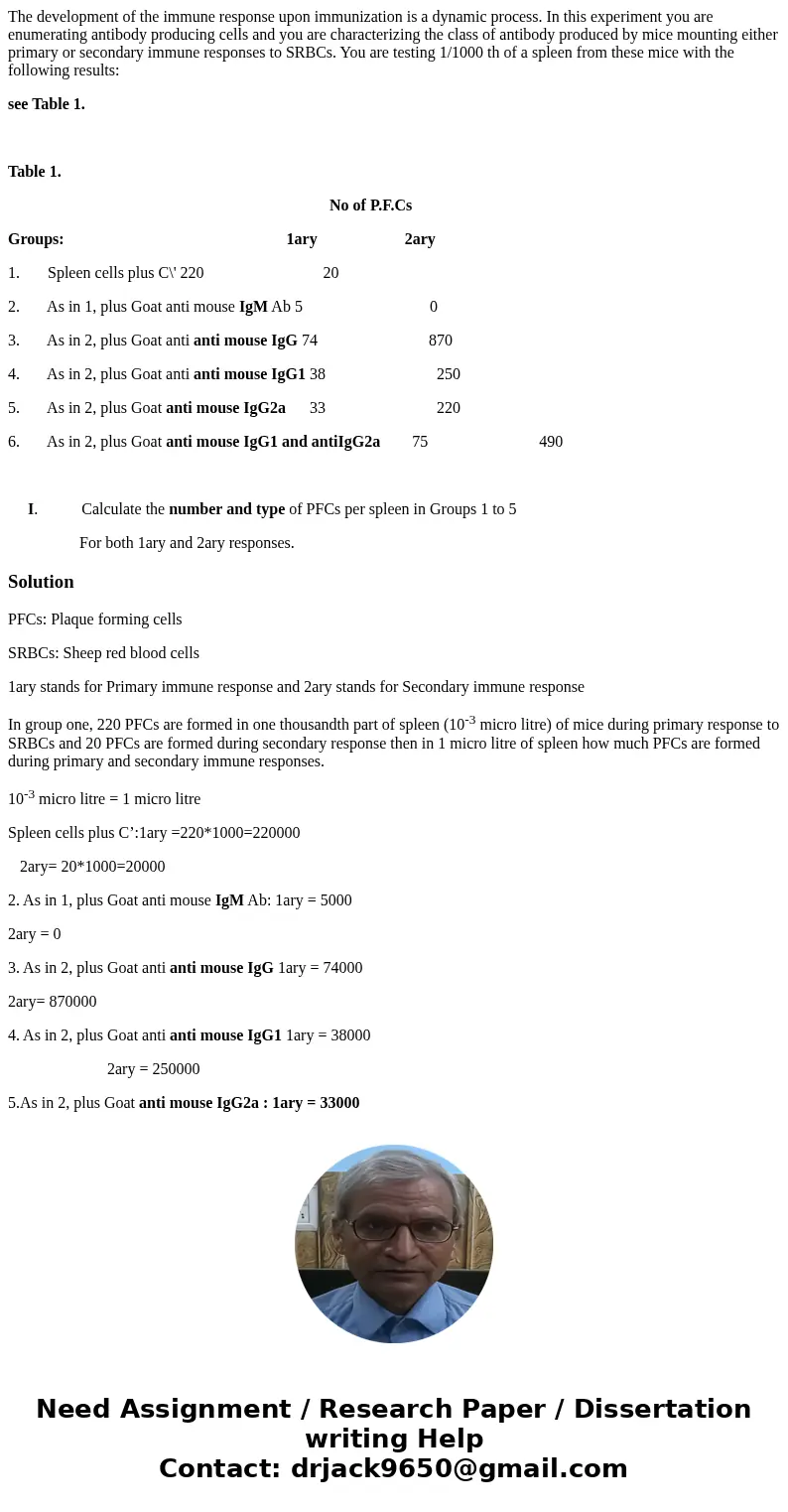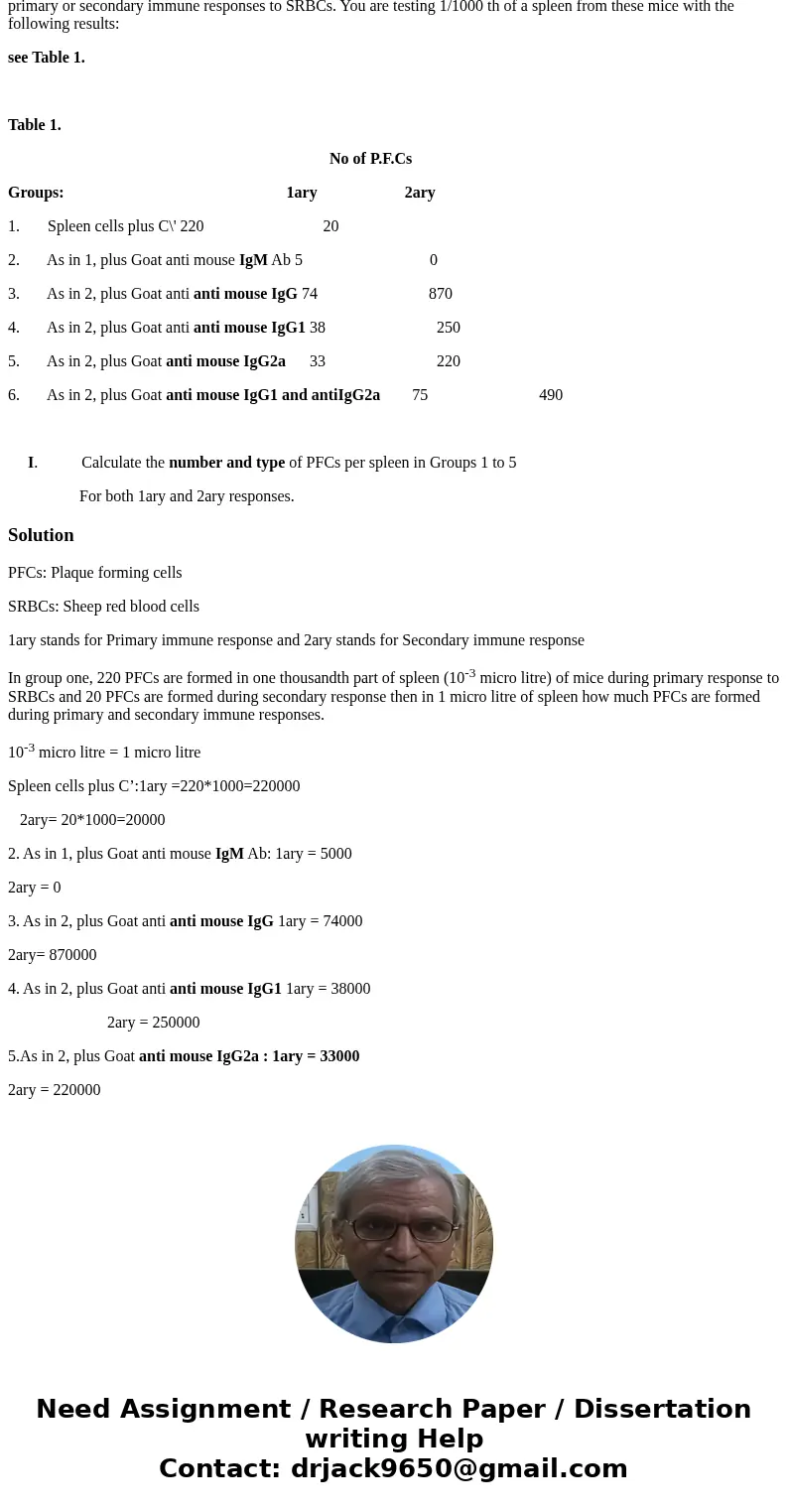The development of the immune response upon immunization is
The development of the immune response upon immunization is a dynamic process. In this experiment you are enumerating antibody producing cells and you are characterizing the class of antibody produced by mice mounting either primary or secondary immune responses to SRBCs. You are testing 1/1000 th of a spleen from these mice with the following results:
see Table 1.
Table 1.
No of P.F.Cs
Groups: 1ary 2ary
1. Spleen cells plus C\' 220 20
2. As in 1, plus Goat anti mouse IgM Ab 5 0
3. As in 2, plus Goat anti anti mouse IgG 74 870
4. As in 2, plus Goat anti anti mouse IgG1 38 250
5. As in 2, plus Goat anti mouse IgG2a 33 220
6. As in 2, plus Goat anti mouse IgG1 and antiIgG2a 75 490
I. Calculate the number and type of PFCs per spleen in Groups 1 to 5
For both 1ary and 2ary responses.
Solution
PFCs: Plaque forming cells
SRBCs: Sheep red blood cells
1ary stands for Primary immune response and 2ary stands for Secondary immune response
In group one, 220 PFCs are formed in one thousandth part of spleen (10-3 micro litre) of mice during primary response to SRBCs and 20 PFCs are formed during secondary response then in 1 micro litre of spleen how much PFCs are formed during primary and secondary immune responses.
10-3 micro litre = 1 micro litre
Spleen cells plus C’:1ary =220*1000=220000
2ary= 20*1000=20000
2. As in 1, plus Goat anti mouse IgM Ab: 1ary = 5000
2ary = 0
3. As in 2, plus Goat anti anti mouse IgG 1ary = 74000
2ary= 870000
4. As in 2, plus Goat anti anti mouse IgG1 1ary = 38000
2ary = 250000
5.As in 2, plus Goat anti mouse IgG2a : 1ary = 33000
2ary = 220000


 Homework Sourse
Homework Sourse